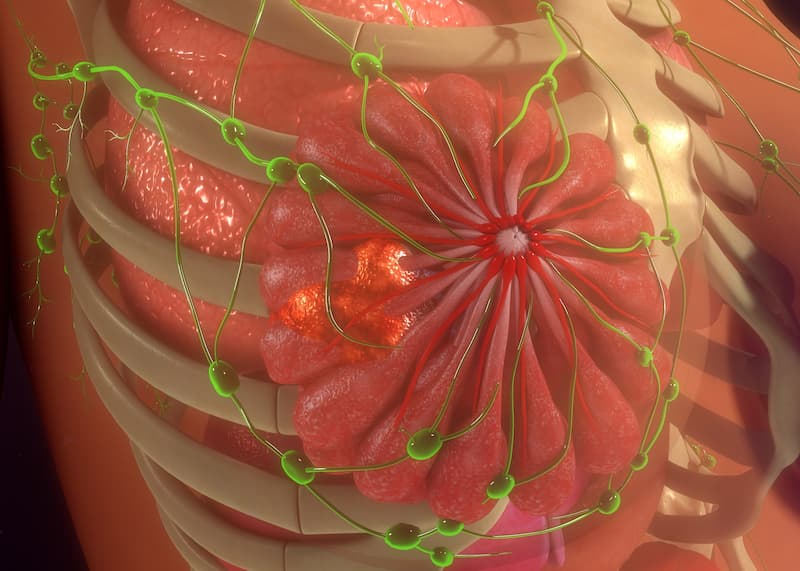Dalpiciclib Combo Improves PFS Vs Placebo in HER2– Advanced Breast Cancer
Findings from the phase 3 DAWNA-2 trial suggest that dalpiciclib plus endocrine therapy may be a potential novel first-line treatment option for hormone receptor–positive, HER2-negative advanced breast cancer.
Treatment with dalpiciclib plus letrozole (Femara) or anastrozole (Arimidex) produced statistically and clinically significant improvements in progression-free survival (PFS) compared with endocrine therapy alone in patients with hormone receptor (HR)–positive, HER2-negative advanced breast cancer, according to findings from the phase 3 DAWNA-2 trial (NCT03966898).1
As of the interim analysis’ data cutoff with a median follow-up 21.6 months, 34% of patients in the dalpiciclib group (n = 303) experienced disease progression or died compared with 54% of those in the placebo group (n = 153). The median PFS was 30.6 months (95% CI, 30.6-not reached [NR]) vs 18.2 months (95% CI, 16.5-22.5) in each respective group (Hazard ratio [HR], 0.51; 95% CI, 0.38-0.69; P <.0001). The dalpiciclib-based regimen improved PFS across all patient subgroups except for those with a disease-free interval of 24 or fewer months.
"The findings from this study suggest that dalpiciclib plus letrozole or anastrozole represents a novel standard first-line treatment for patients with [HR]–positive, HER2-negative advanced breast cancer, and is an alternative option to the current treatment landscape," according to the study authors.

PFS based on blinded independent review committee (BIRC) assessment was consistent with investigator review. The median PFS was NR (95% CI, NR-NR) in the dalpiciclib group vs 22.5 months (95% CI, 17.0-NR) in the placebo group (HR, 0.50; 95% CI, 0.36-0.70).
“The findings from this study suggest that dalpiciclib plus letrozole or anastrozole represents a novel standard first-line treatment for patients with [HR]–positive, HER2-negative advanced breast cancer, and is an alternative option to the current treatment landscape,” the study authors stated.
Investigators of the double-blind, placebo-controlled, phase 3 DAWNA-2 trial treated patients at 42 hospitals across China. Patients were randomly assigned 2:1 to receive 150 mg of oral dalpiciclib per day using a 3 weeks on, 1 week off schedule or matched placebo. All patients also received continuous endocrine therapy with 2.5 mg of letrozole or 1 mg of anastrozole orally once a day.
The primary end point was investigator-assessed PFS. Secondary end points included PFS per BICR assessment, overall survival (OS), objective response rate (ORR), clinical benefit rate (CBR), duration of response (DOR), and safety.
Patients 18 to 75 years old of any menopausal status with pathologically confirmed HR-positive, HER2-negative locally advanced breast cancer not amenable to curative resection or radiation were eligible for enrollment on the trial. Additional inclusion criteria included having a measurable lesion per RECIST v1.1 criteria and receiving no prior systemic therapy for advanced disease.
Between July 19, 2019, and December 25, 2020, investigators included a total of 456 eligible patients in the study. The median patient age was 55.0 years (interquartile range, 46.5-63.0), and 62% of patients were post menopausal.
At baseline, 61% of patients had visceral metastases, and 8% had disease only in the bone. Additionally, 31% of patients had received previous endocrine therapy in the neoadjuvant or adjuvant setting, and 55% and 45% received letrozole and anastrozole as an endocrine therapy partner, respectively.
The OS data were immature at the time of the data cutoff. A post hoc analysis indicated that the median time to subsequent chemotherapy or death was NR (95% CI, NR-NR) in the dalpiciclib group vs 33.0 months (95% CI, 26.5-NR) in the placebo group.
Based on investigator assessment, the ORR was 57% (95% CI, 52%-63%) for patients in the dalpiciclib group compared with 48% (95% CI, 40%-56%) of those in the placebo group. Additionally, the CBR in the intent-to-treat population was 87% (95% CI, 83%-90%) vs 80% (95% CI, 73%-86%) in each respective group. Of the patients with a response in each respective group, the estimated median DOR was NR (95 CI, 26.9-NR) vs 15.0 months (95% CI, 12.9-20.3).
Grade 3/4 adverse effects (AEs) occurred in 90% of patients in the dalpiciclib group vs 12% of those in the placebo group. The most common grade 3/4 AEs in each respective group included neutropenia (86% vs 0%) and leukopenia (67% vs 0%). Moreover, treatment-related neutropenia of grade 3 (65%) or 4 (21%) only occurred in patients receiving the dalpiciclib-based regimen.
AEs leading to dose reductions occurred in 32% of patients in the dalpiciclib group compared with 2% of those in the placebo group. Investigators observed treatment-related serious AEs in 7% and 3% of patients in each respective group, the most common of which was thrombocytopenia in 2% of those in the dalpiciclib group.
Deaths due to AEs occurred in 3 patients receiving treatment with dalpiciclib, including 2 of unknown causes and 1 due to cerebral hemorrhage. Additionally, 2 patients in the placebo group died due to AEs, including 1 due to an unknown cause and 1 due to disease progression.
Investigators previously presented findings from the DAWNA-2 trial at the 2022 European Society for Medical Oncology Congress (ESMO).2
References
- Zhang P, Zhang Q, Tong Z, et al. Dalpiciclib plus letrozole or anastrozole versus placebo plus letrozole or anastrozole as first-line treatment in patients with hormone receptor-positive, HER2-negative advanced breast cancer (DAWNA-2): a multicentre, randomised, double-blind, placebo-controlled, phase 3 trial. Lancet Oncol. Published online May 11, 2023. doi:10.1016/S1470-2045(23)00172-9
- Xu B, Zhang QY, Zhang P, et al. Dalpiciclib plus letrozole or anastrozole as first-line treatment for HR+/HER2- advanced breast cancer (DAWNA-2): a phase III trial. Ann Oncol. 2022;33(suppl 7):LBA16. doi:10.1016/annonc/annonc1089